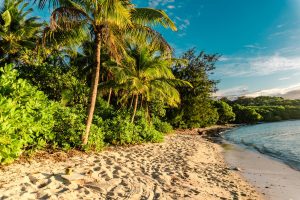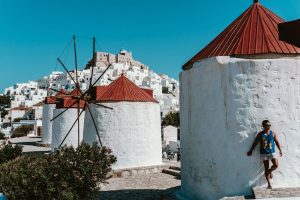Moldova is probably one of the last places that people think to visit when visiting Europe. It’s sandwiched between much larger countries in Romania and Ukraine which people also glance over (although I absolutely love Kyiv Ukraine). I’m not here to say that you’ll find beautiful European historical monuments in Moldova because you likely won’t.
What you will find is a fascinating country that has gone through incredible economic and political hardships in its history. The balance of new and old is striking in this country which holds the title of least visited in Europe.
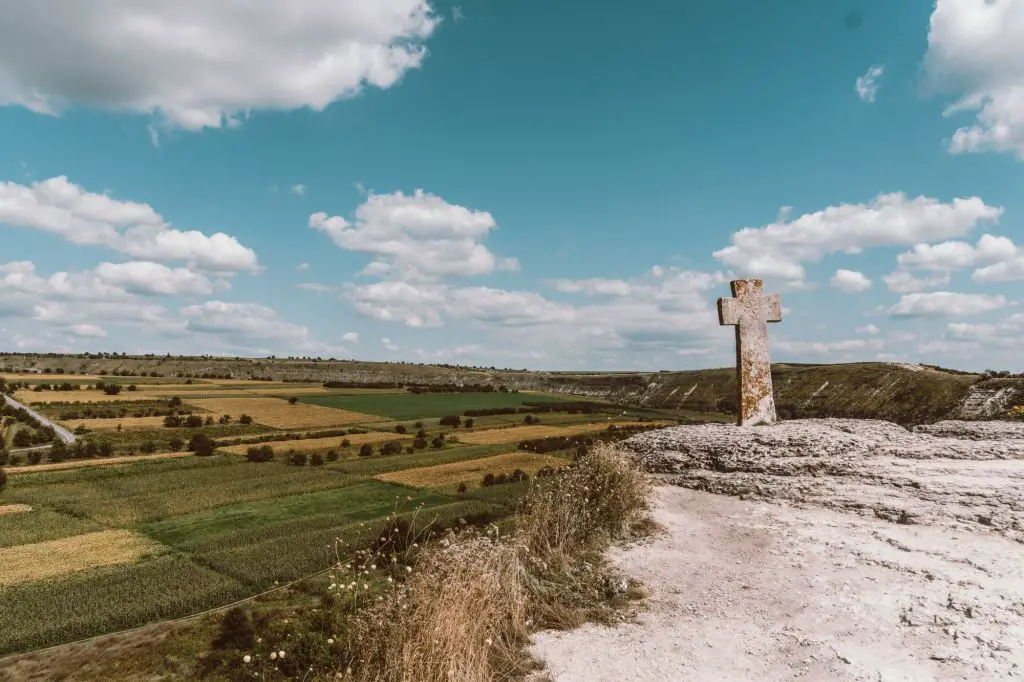
You will find some of the most underrated and delicious wines in Europe which was completely unexpected for me. You will also find incredibly fresh produce and some of the most delicious tomatoes I’ve had in my life. Moldova is probably not the place for a novice European traveler but it is well worth the visit!
Where I went in Moldova
I had five days to spend in Moldova which I think is probably enough to see the sights. You could probably even spend less time as there aren’t a whole lot of things to do here.
I didn’t do a great deal of research in planning this trip because there aren’t too many resources online. I found a flight from Frankfurt to Chisinau on Air Moldova for 130 euros and off I went.
These are the places I visited in Moldova:
- Chisinau
- Transinistria
- Cricova Winery
- Orheiul vechi monastery
If these places ring a bell and sound like the places you want to visit, this is the perfect itinerary for you! Again, there isn’t a whole lot to do in Moldova but it was just fascinating to learn about the history of a country that was a part of the USSR.

How to get around Moldova
Moldova is a very small country, the smallest by land mass in Europe. The international airport is Chisinau and there are direct flights to the Moldovan capitals from many big European cities.
Alternatively, many people reach Moldova by Ukraine via Odessa. There are regular buses that go from Odessa to Chisinau. There are also direct buses from Bucharest to Chisinau.
Once in the country, the best way to get around to smaller towns and destinations is by local buses called Marshrutkas. These buses generally leave on time but sometimes wait until there are certain amounts of people.
Use the Yandex App
Ride hailing has really made it easier to travel in Moldova. Yandex is the most widely used ride hailing app in the country and it is great for trips around Chisinau, but also short trips to nearby towns. I actually used the Yandex App to go to the Cricova winery which took 30 minutes and cost about 120 MDL (€6 or so).
The Moldovan Leu Currency
Moldova uses the Moldovan Leu currency. It trades around 20 MDL to €1 at the time of writing. Most places in Chisinau accept credit card but it is good to have cash on hand for smaller establishments and especially once you leave the main city.
You will need Moldovan Leu or other currencies when visiting Transinistria as they only use their own currency (the Transinistrian Ruble).
Cost of goods in Moldova
Moldova is probably one of the cheapest countries in Europe for a visit. The GDP per capita of Moldova is among the very bottom along with Kosovo and the prices of food and alcohol will reflect that. A cheap local meal can be had for a few euros and a glass of wine is no more than €2 at a decent restaurant.
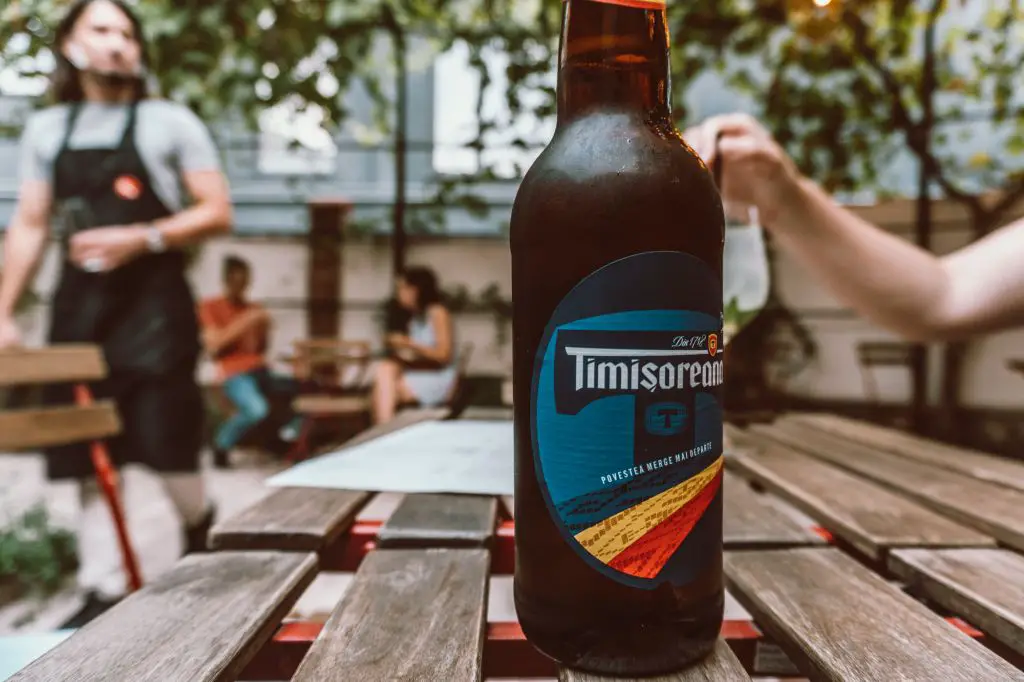
However, in Chisinau, there are plenty of establishments and touristy restaurants where prices are much much higher. However, you would expect that in most cities. Cost of public transportation is incredibly cheap. The bus from the airport to Chisinau is only 2 MDL for example (€0.1) and accommodation in the city center is very cheap.
All in all, I would not worry about breaking the bank when visiting Moldova. You can have a great time here without worrying about the finances.
What is the Moldova Language?
Moldova is bit unknown on the global stage. The Moldovan people speak Romanian as their primary language. After WW2, Moldova was a part of the Soviet Union and therefore everyone learned Russian. Nowadays, most people in the country speak Romanian and Russian. Young Moldovans learn Russian in school unlike their former Soviet counterparts in the Baltic countries that are not so keen on the Slavic language.
Ethnically, Moldovans are essentially Romanians by ancestry. There was even talk of the country reuniting with Romania after the fall of the Soviet Union but this never materialized. You’ll see that the flags of the two countries are quite similar

Full Moldova Trip Itinerary
This itinerary starts in Chisinau, the capital of Moldova. The capital city is quite small so you don’t really need more than 1-2 days to see all the sights. Similar to Tirana in Albania, there isn’t much historical beauty in the city but there are plenty of newly trendy areas where you can find yourself having great drinks and great food.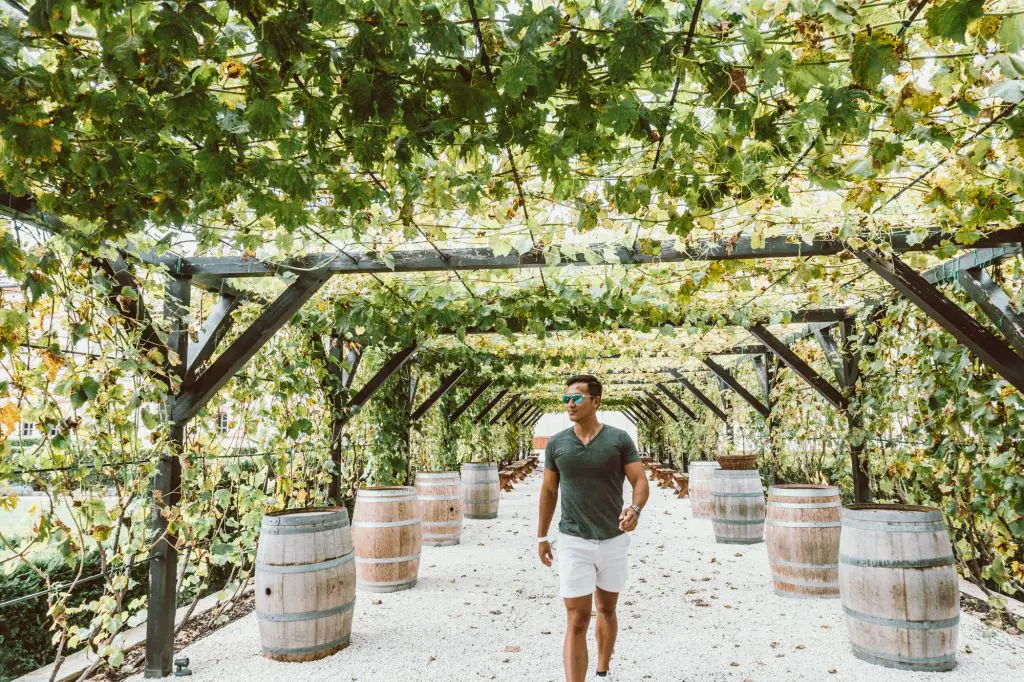
From Chisinau, I took a day trip to the Autonomous region of Transinistria. This fascinating little area on the Moldova/Ukraine border is essentially its own country that no one else in the world recognizes. More on that later in the post.
The following day, I rented a car and visited the numerous wineries in Moldova. Along the way, I stopped by some famous monasteries and had lunch at perhaps one of the coolest restaurants I’ve ever seen. Again, totally unexpected but very welcome.
Day 1-2: Chisinau, Moldova’s Capital City
The trip starts in Chisinau, the capital city of Moldova. I’m not going to lie, Chisinau is perhaps one of the least attractive cities in Europe. Being in the center of the region meant it was constantly being fought over by the likes of the Ottomans, Russians, and Romanians. This is all before World War 2 as well. Nazis and Soviets changed hands and two Earthquakes in the 1940s devastated what was left.
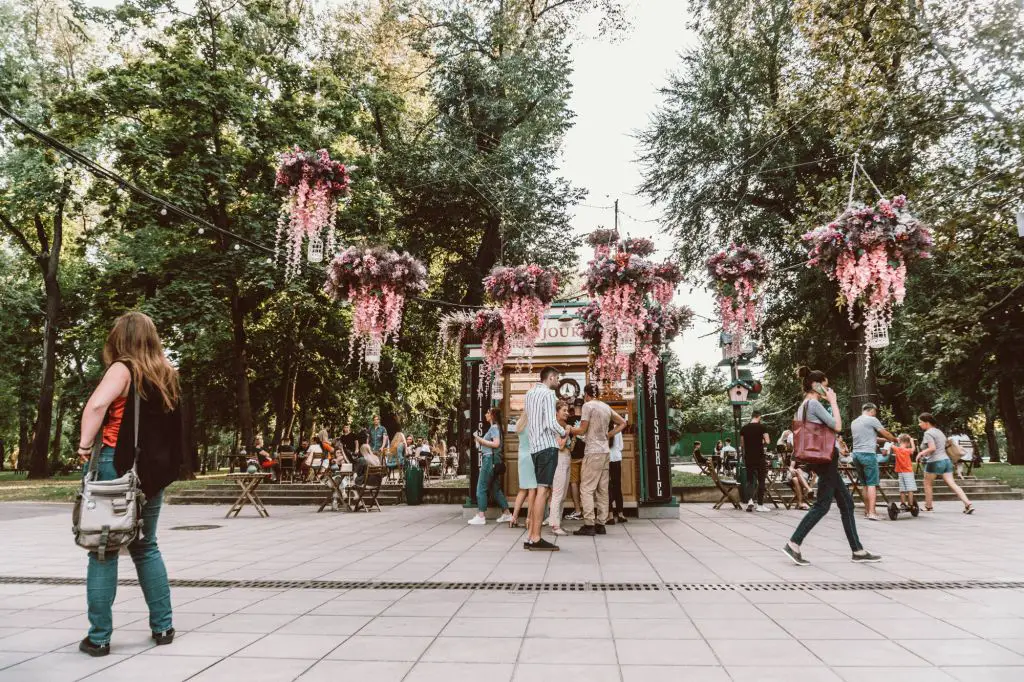
The city was mostly built during Soviet times and the architecture reflects that. It’s essentially a mix of random buildings and Soviet buildings.

While it’s not your quintessential European city experience, there are plenty of things to see and do here. Like Prishtina in Kosovo or Tirana in Albania, this city is more about the new age character than about its historical beauty.

Chisinau’s compact size means you can see most of the sights in a breeze without having to plan much. I felt very safe in the city even in the middle of the night which was not a surprise to me. There are very few tourists here so it’s likely people will want to ask where you’re from and specifically why you chose to come to Chisinau when you have the rest of Europe on offer. I always enjoy these questions because I simply answer, “why not?” which makes people happy.
Visit the Cathedral Park and Arc De Triumph
You won’t be able to walk through Chisinau without visiting the Cathedral Park. This is the main park of the city (albeit not so large). It is a clean and spacious park that has cafes, monuments and plenty of green space.
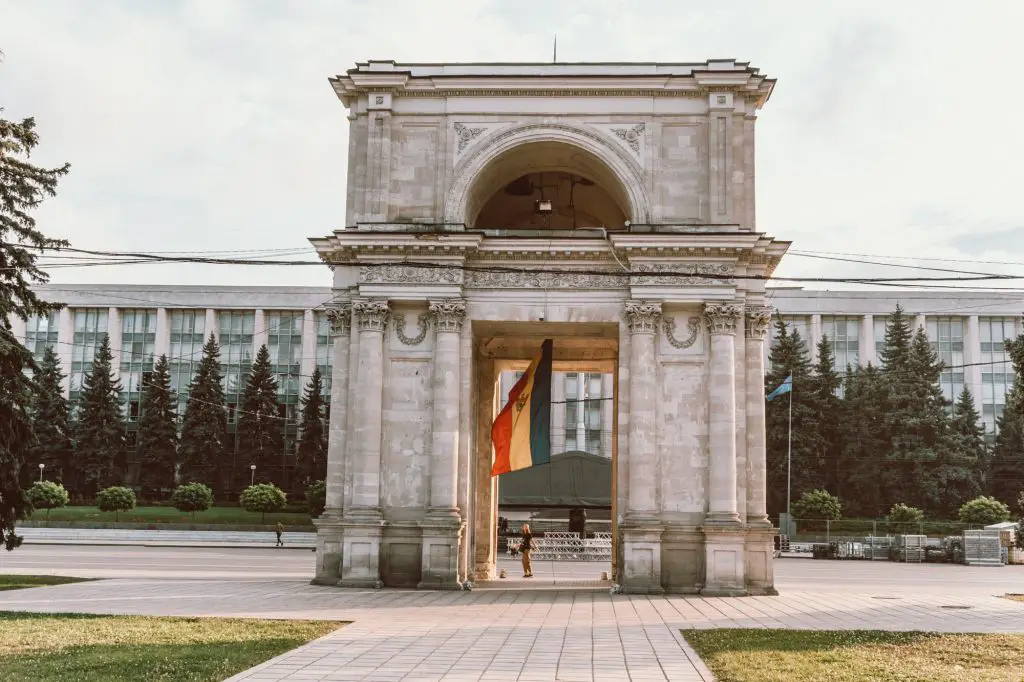
The main landmark in the city is without a doubt the Arc de Triumph. Yes, lots of cities have this like but of course the mother of all Arcs is in Paris. Don’t expect anything close to the beautiful Arc in Paris. It’s probably 1/4 the size but nevertheless it is the monument of the city nonetheless. It was built in the 19th century to commemorate the Russian victory over the Ottoman empire which ruled over Chisinau for so long.

The Cathedral of Christ’s Nativity in the heart of Chișinău is the main cathedral of the Moldovan Orthodox Church and was built in neoclassical design in the 1830s.
Bombed during World War Two and then desecrated by communists, the Nativity Cathedral Chișinău was lovingly restored in 1997 after Soviet restrictions on worship had been lifted, and today it is truly the center of faith in Moldova. Pop your head in, and you will often see everything from quiet moments of spirituality to full-blown sermons with a live television crew, and a crowd packed in tighter than sardines in a can!
Parliament of the Republic of Moldova
While there are no tours and you’re not allowed inside, you have to see what is most likely the world’s ugliest parliament building – and wander the eerily quiet grounds.
Wondering where all the politicians are?
We were too, and all we saw here was one surprised security guard who could not for the life of himself figure out why a tourist would want to see the parliament here. The building is actually the former meeting place of the Central Committee of the Moldovan branch of the Communist Party of the Soviet Union and was badly damaged during riots in 2009.
More interesting after a chat with Moldovan’s about the fractured state of politics here — but then again, where isn’t these days!
Go out in Chisinau City
Chisinau is not the party central of Europe like other cities have become. However, if you are traveling through Moldova, you will be able to have a good time at the various establishments the city has to offer.
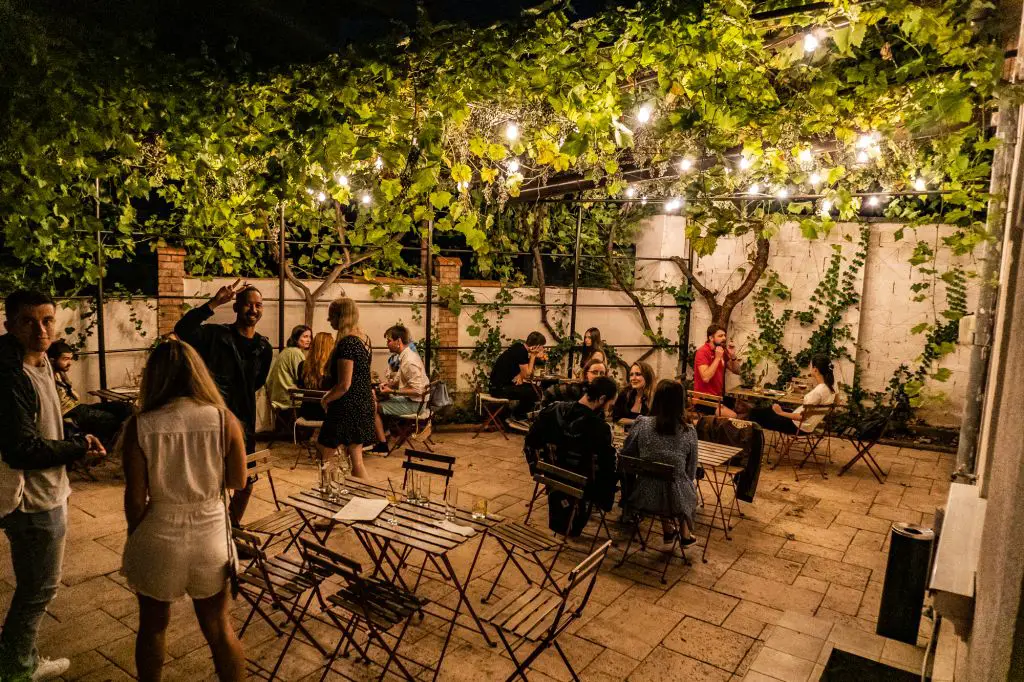
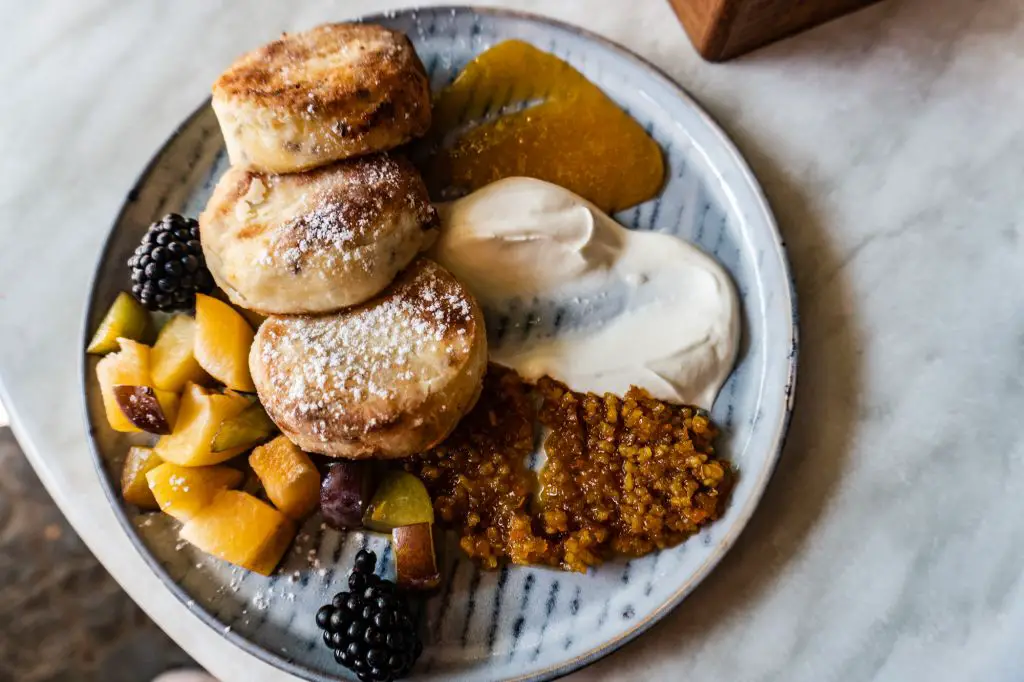
The nightlife scene in Chisinau has really evolved over the years and there are plenty of good cocktail bars, wine bars, and restaurants that will keep you busy.
Chisinau is served by the Yandex taxi app so make sure to download this here to ride hail your way around the city. It is very cheap and you’ll likely not need to use it much as everything is so walkable.
- Marlene Cocktail Bar: Best cocktails in the city
- Vatra Neamului: Great spot for Romanian food
- Black Rabbit: Another really good local restaurant
- Creme de la Creme: Great breakfast cafe type of spot where plenty of people hang out. Great place to have syrnikiwhich is the local Eastern European cheese pancakes
- Ştefaniţa Plăcinte: Must visit to try the local placinte pastry
- Boujour Cafe: Great place in the park for a morning coffee
- Grill House: Upscale restaurant serving delicious grilled meats
- Zaxi: The trendy rooftop bar experience
Visit the central market of Chisinau
Located in the city center, the central market is where you will find everyone looking to buy food, goods, clothes, and more. It is absolutely enormous. I walked through the entrance thinking I would find a few stalls of the standard street markets.
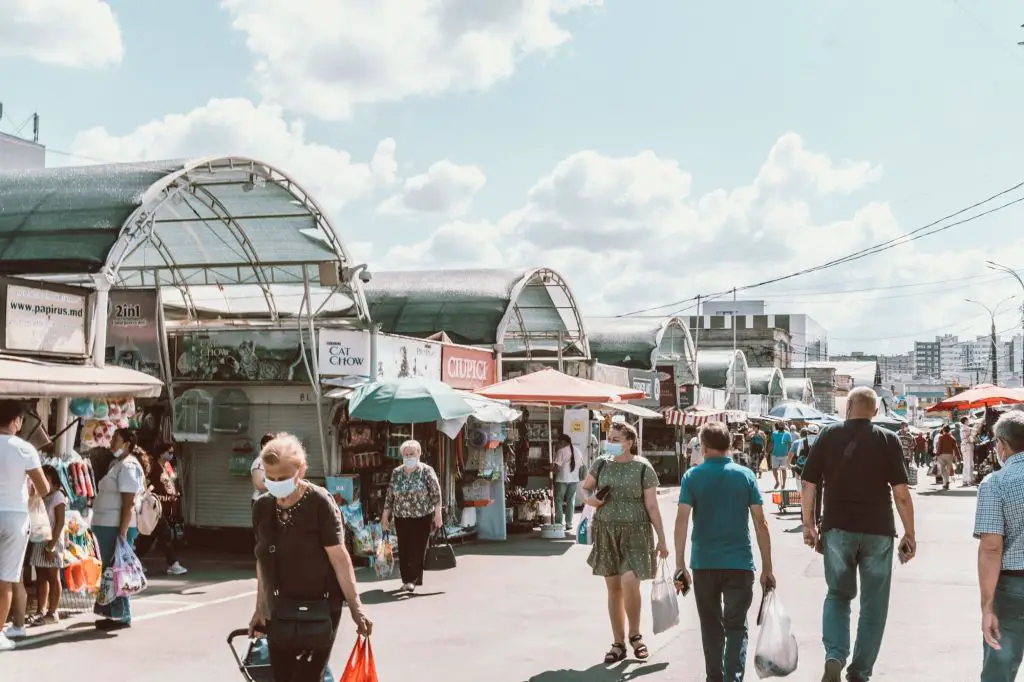
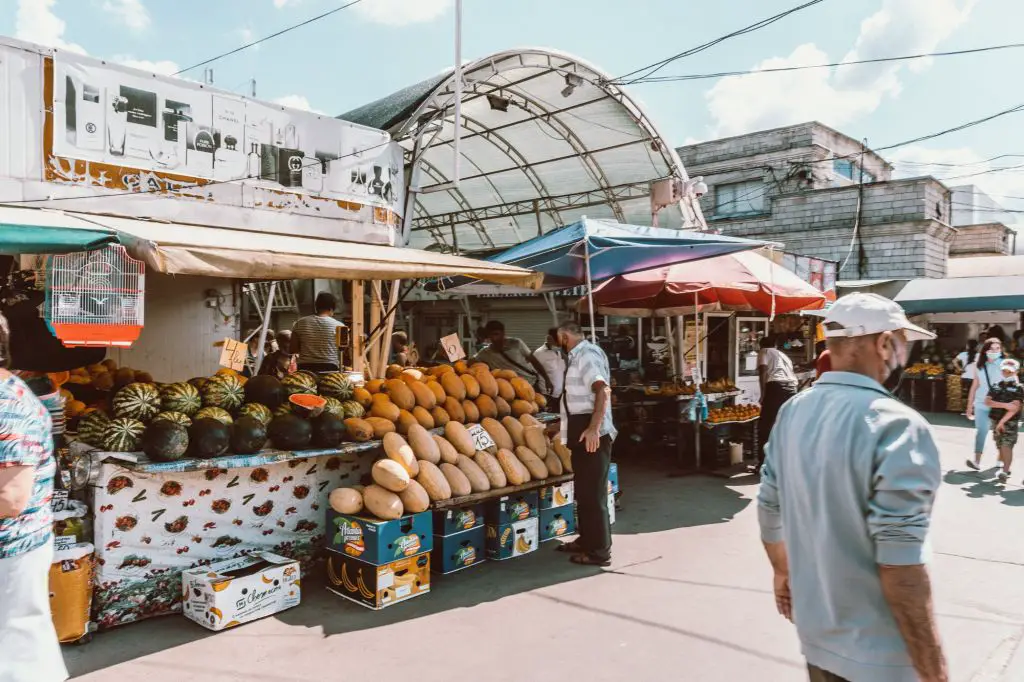
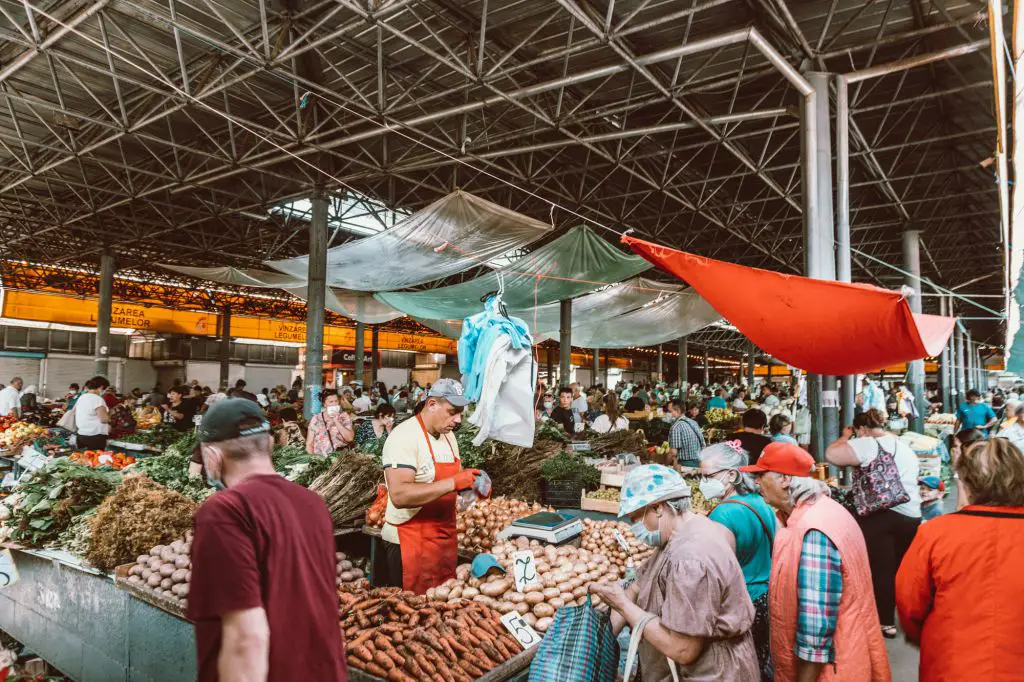
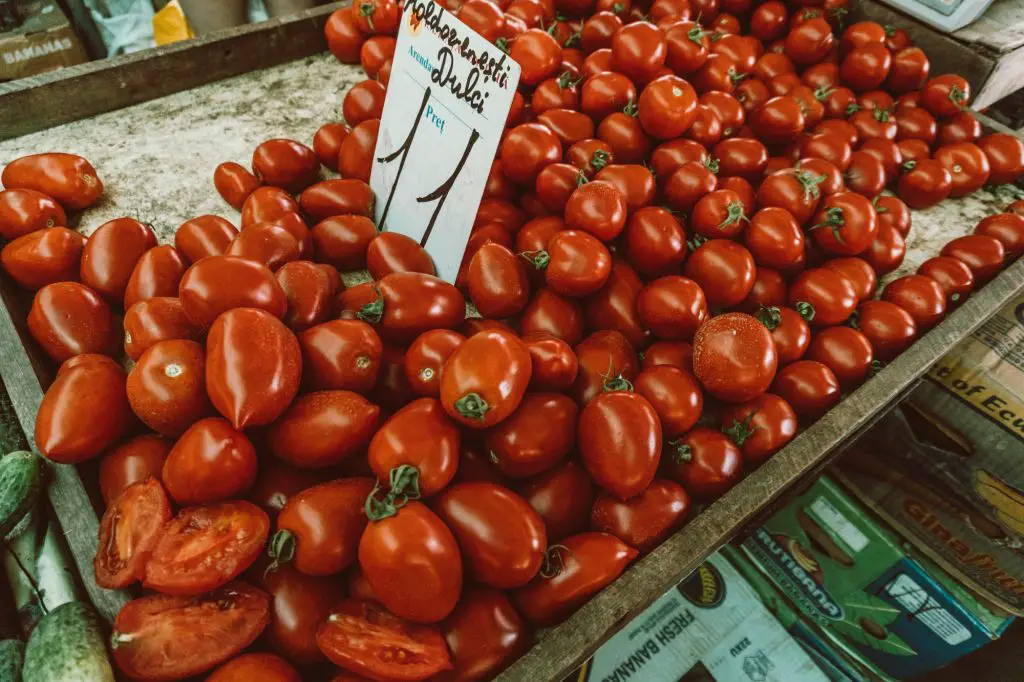
A half hour later, I was still walking through the market in a straight line. This outdoor market is one of the biggest if not the biggest market I’ve ever seen. You will find everything and anything here. I’m not big into buying souvenirs or goods, but it was interesting to walk through it nonetheless!
Day 3: Transinistria Day Trip from Chisinau
Transinistria is one of the top day trips in Moldova because it’s a complete novelty to visit an Autonomous region that no other country recognizes. Tiraspol is the capital of Transinistria and its Soviet roots are strong. As soon as you enter the region, everything is in Cyrillic immediately. You won’t find any Latin symbols in almost any part of the region. It’s quite fascinating.
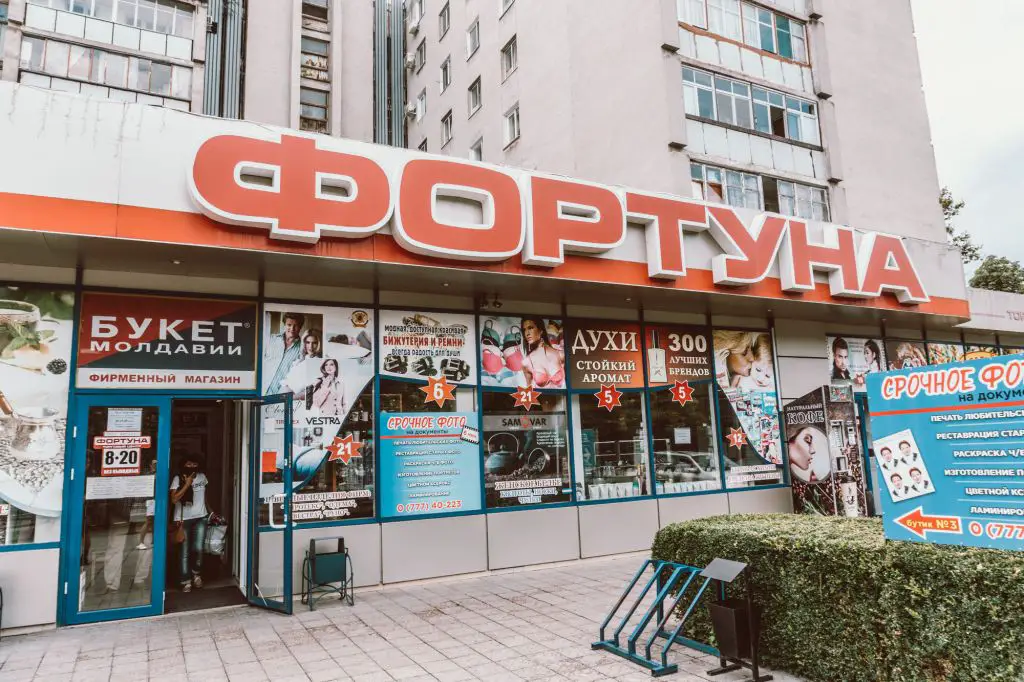
What is Transinistria?
Transinistria is an autonomous region within Moldova. It sees itself as its own independent country separate from Moldova. However, as it more or less seceded without much planning back in the 1990s, it is not recognized by any country in the world for its independence. Not even Russia acknowledges its existence.

In the 1990s, after the collapse of the USSR, Moldova contained a large Russian speaking population among its Romanian majority. The area of Transinistria felt strong ties to its Soviet roots and after Moldova gained independence from the USSR, they decided to secede in hopes of establishing a new social republic that would have strong ties to the Soviet Union.
Transinistria currency
Transinistria has its own currency, the Transinistrian Ruble, which is only used and accepted in the autonomous region. You will need to change cash (EUR, Moldovan Leu, USD etc.) when you arrive as no one accepts credit card (because no payment company sees the Transinistrian Ruble as an actual currency). This also goes for debit cards. You cannot withdraw Transinistrian Rubles at all.
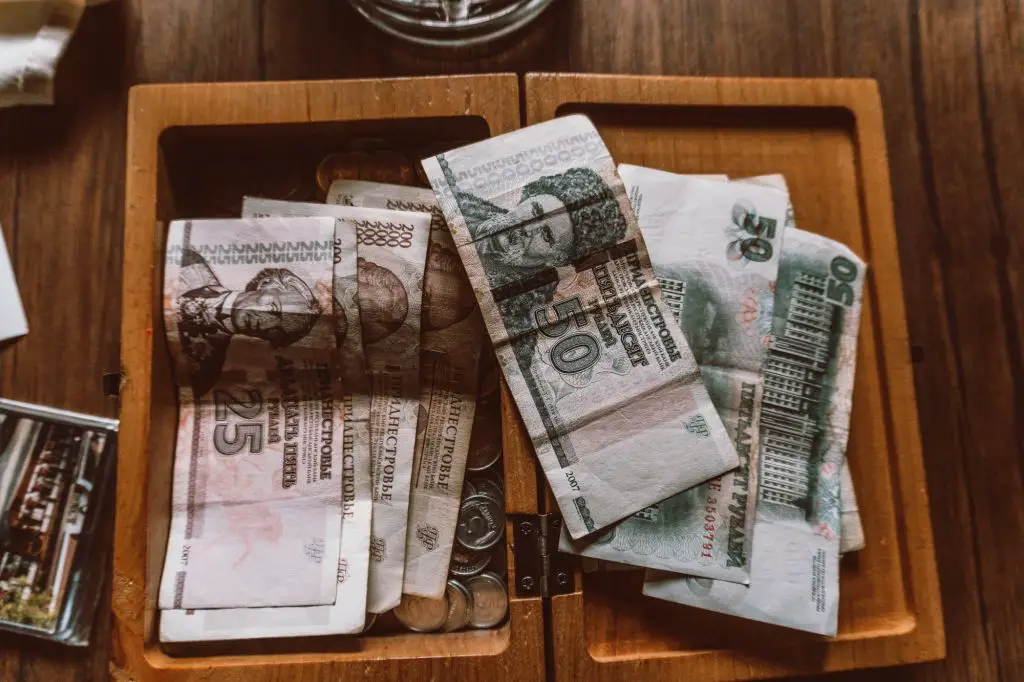
The banks that I did saw dispensed Russian Rubles which you could then use at a exchange shop for Transinistrian Rubles. However, the exchange rate you get for Russian Rubles is terrible.
This part fascinated me as I’ve been to some remote places in the world like the Democratic Republic of Congo with their own currencies but could also use my credit card at larger establishments or my debit card to withdraw cash. The money in Transinistria is literally monopoly money. You can’t even use it when you go back to Moldova. Make sure to spend all your cash or exchange it back to Moldovan Leu or Euros upon exiting!
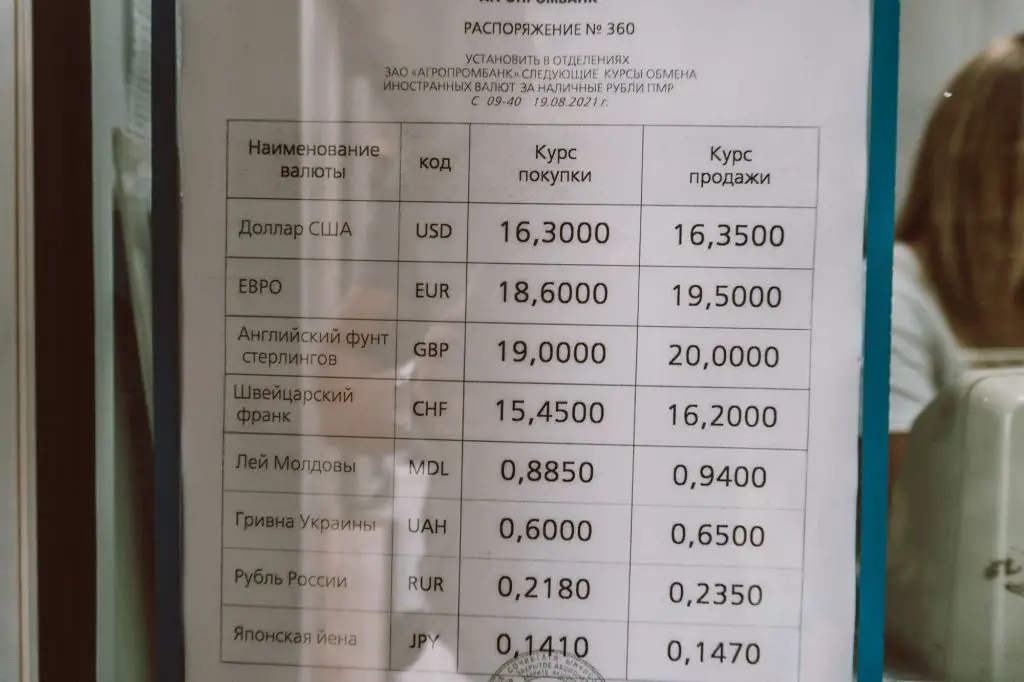
To make it even more confusing, the exchange rate is 1 PRB (Transinistrian Rubles) to 0.9 Moldovan Leu. At least keep the exchange rate 1 to 1 to keep it simple!
Getting from Chisinau to Transinistria
Marshrutkas (local buses) to Tiraspol leave continuously from the Central Bus Station and one ticket costs 37MDL. It is a 2-hour journey through beautiful wine and sunflower farms.
Make sure to take your passport as you are going to “another” country after all. If you are driving, make sure your rental company allows you to enter Transinistria. I know a lot of the car rental companies in Moldova won’t allow you to enter the autonomous region due to insurance and the like.
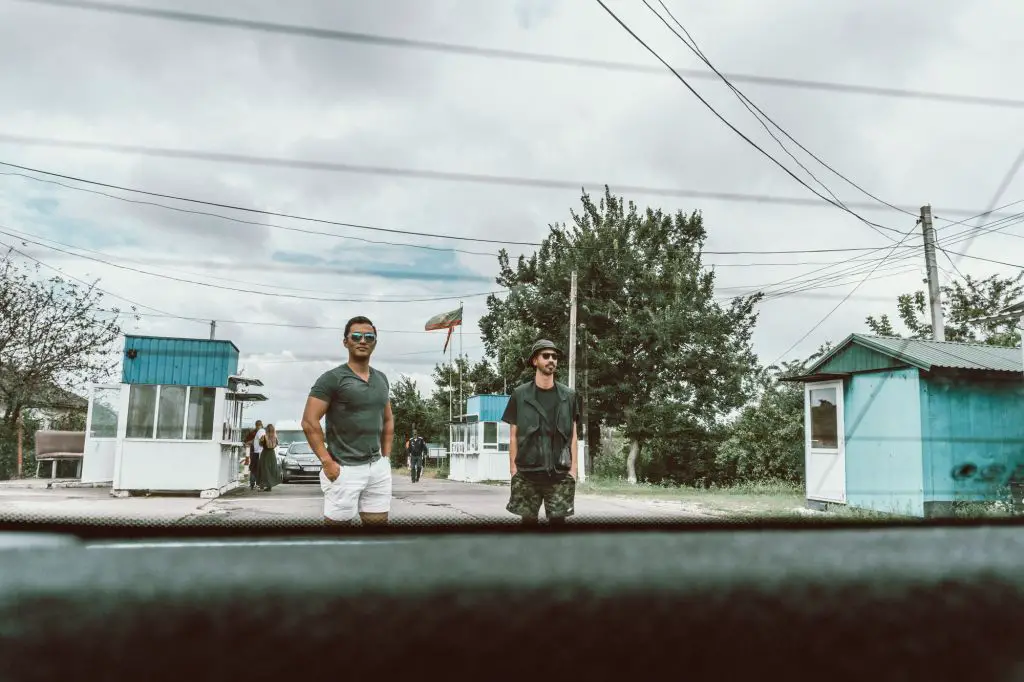
The border crossing is quite basic but you will see the new flag of Transinistria that again, no other country recognizes. The green, red, and yellow of Transinistria stays in this tiny little enclave only.
What to do in Transinistria?
Like Chisinau, there isn’t much to see in the capital city of Tiraspol.
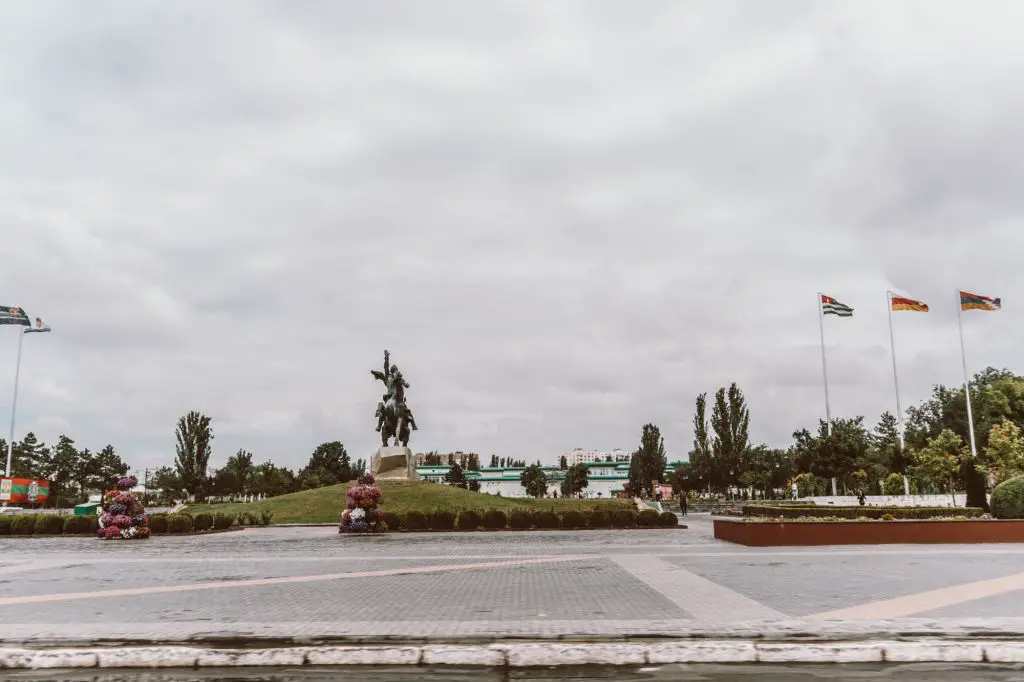

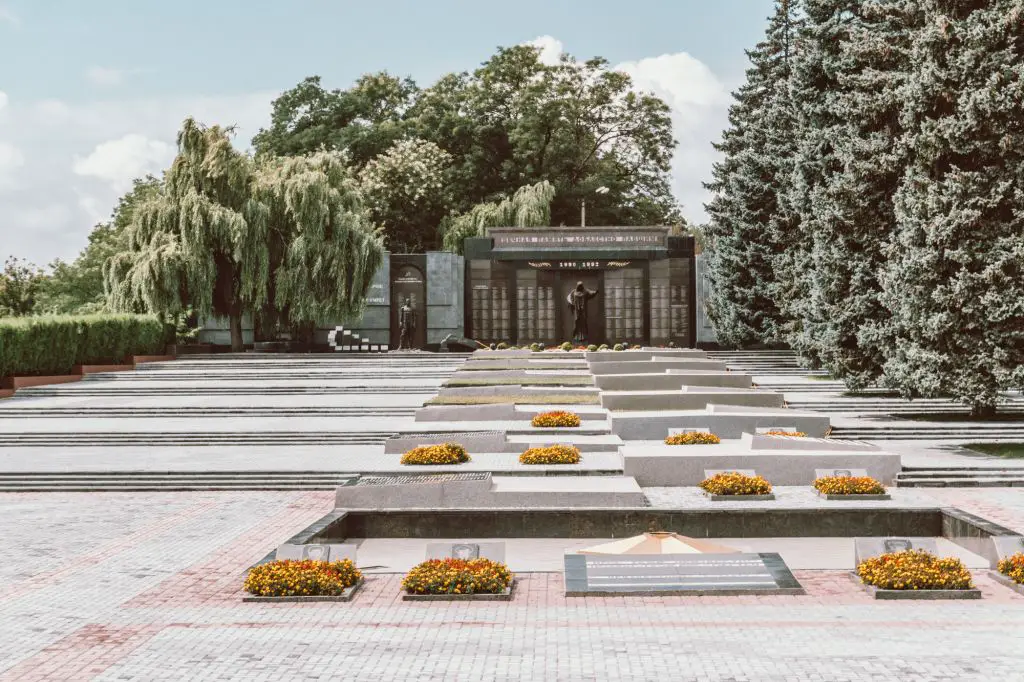


There is a big statue of Lenin in front of the Parliament Building. Across the street is a big monument dedicated to various wars fought in the Soviet Union along with a large tank. Across the street is the main square which has flags dedicated to the other Autonomous regions that love all things Soviet but is also recognized by no one. These are the regions of:
- Abkhazia – within Georgia
- South Ossetia – within Georgia
- Artask – formerly known as Nagorno Karabakh and only accessible from Armenia.
The town is not pretty and former Soviet architecture is on full display. I visited during a sunny day in the summer months. I could imagine this place being a bit depressing in the colder and darker months.
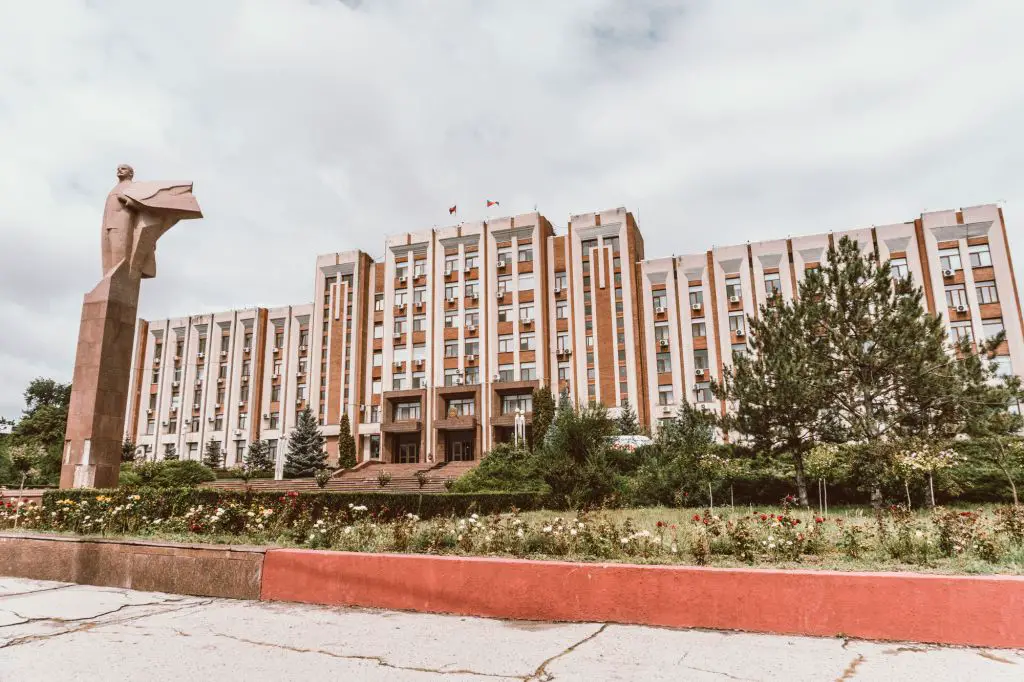
Make sure to also visit the Kvint factory which is the pride and joy of Transinistria. Kvint is the local brandy of the region and can be had for incredibly cheap prices. I’m not a big fan of it but when in Rome right!
Day 4: Cricova Winery tour and Orheiul vechi Monastery
One of the most interesting things I learned about Moldova is about its wine production. I had never really heard of Moldovan wine before visiting but turns out that wine is a big part of the country! In fact, Moldova had such great wine production and land that it accounted for something like a quarter of all wine produced during the Soviet Union.
Nowadays, the wine industry employs a huge chunk of the local population and it is widely exported around the world. Moldova is well known for its red wines and sparkling wine.
Orheiul vechi Monastery
Orhei Vechi, meaning Old Orhei, is one of the top attractions in Moldova, an archeological and ecclesiastical complex containing 2,000-year old ruins, a cave monastery, a modern monastery and quite a few archaeological sites scattered all over the place.
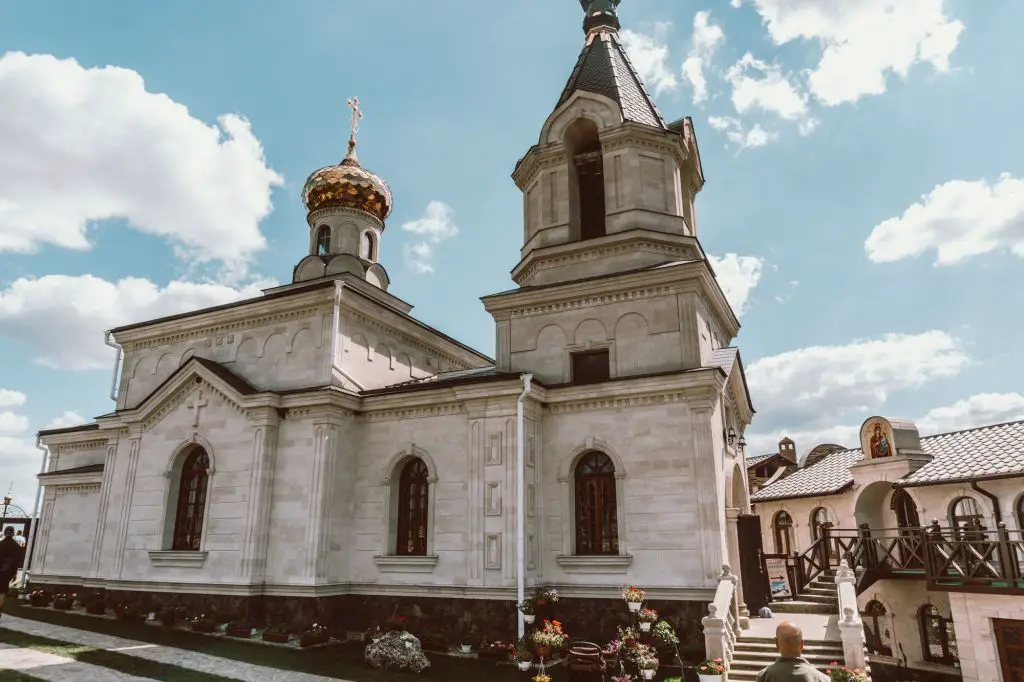
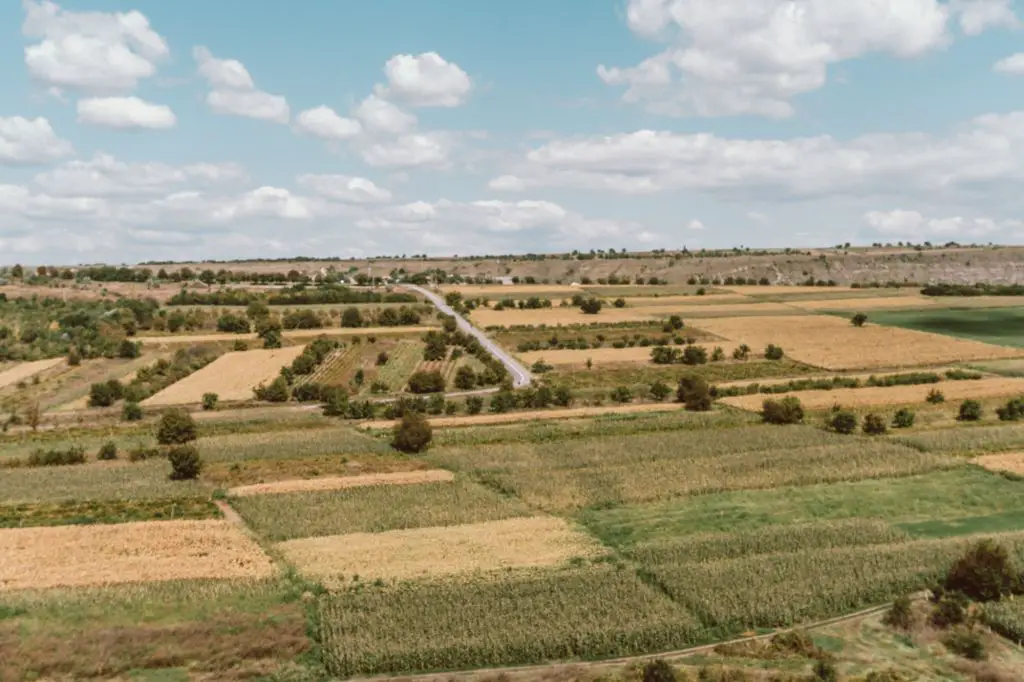
You will need to walk along a small hill to get to the walking path toward the monastery. The views here are quite stunning of the river and the monastery in one view. Visiting the complex is free and won’t take much time at all.
Lunch at the cave restaurant – Epoca de Piatra
I had done no previous research of this restaurant but merely wanted to find something near the Orheiul Vechi Monastery. It turns out, I literally picked the most unique and worthwhile restaurant in all of Moldova.
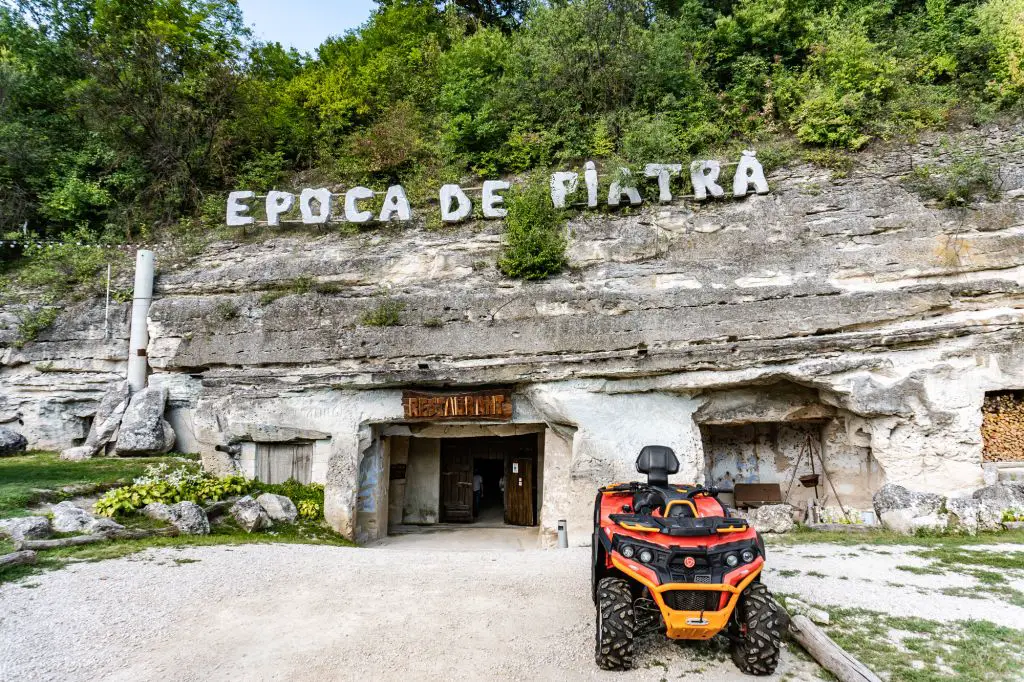
This restaurant is located inside the mountains like a cave. The entrance to the restaurant is through a big hallway surrounded by rocks with caveman style paintings. Of course, these are not original but they are all for the theme of the restaurant.

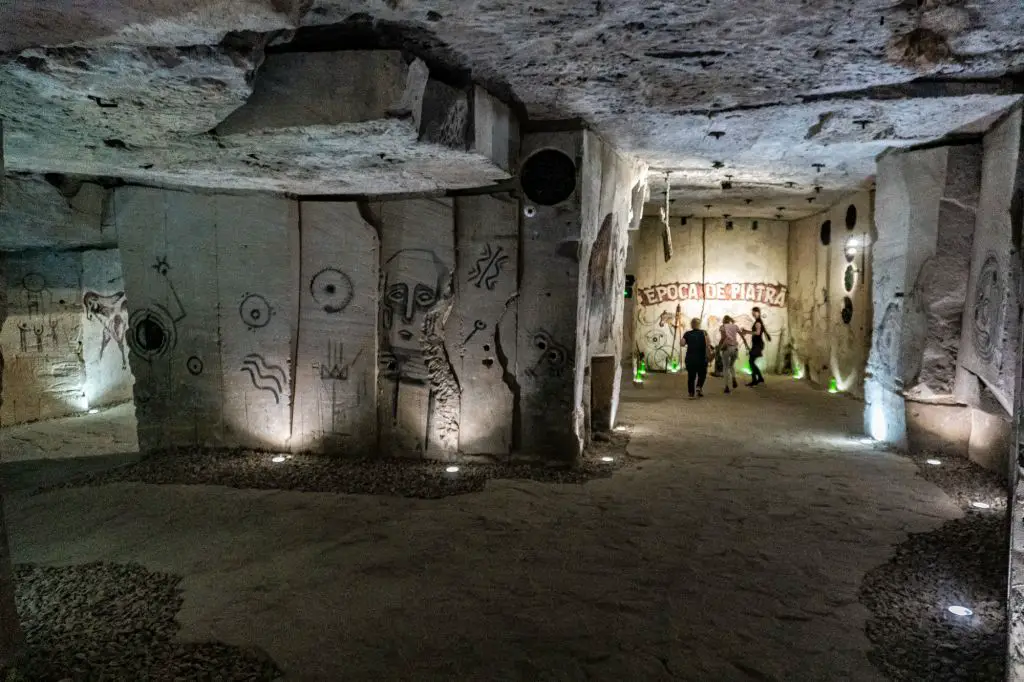

Once you enter the restaurant, you’ll be greeted with rustic tables, stone slabs, fire pits, and generally a feeling that you’re dining in a cave. The food here is fantastic but the vibe and atmosphere is just one of the most unique experiences I’ve ever had. Highly recommended if you have a car and can drive out here!
Visiting the Cricova Winery
There are numerous wineries around Chisinau but the Cricova Winery is the most famous. It has an underground cellar that spans 100km for actual roads and produces 8 million bottles a year.
Cricova offers guided tours of the property every day in English, Russian, and Romanian. I’d highly recommend a visit to this winery if you are into wine making. You can make reservations on their website or by simply calling them. The tours can get quite busy during the high season because this is one of the top things to do in the country.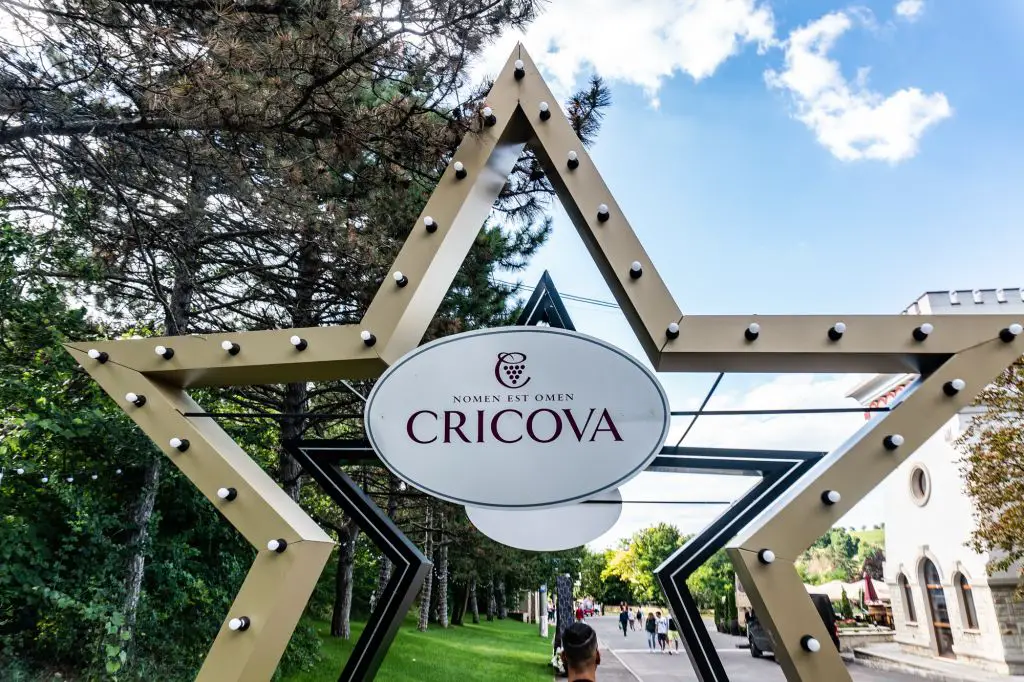
The tour itself is quite interesting. It explains the history of the winery and you ride on a little car throughout the underground caverns. It is literally a small town at the Cricova winery. It goes 100m underground and has almost 100km of actual roads that lead from one place to the other.
Cricova is famous for its sparkling wines and is one of the few wineries in the world that makes sparkling wine in the traditional French way. Like visiting Champagne in France, they employ the hand turn method for their sparkling wine which takes an immense effort.

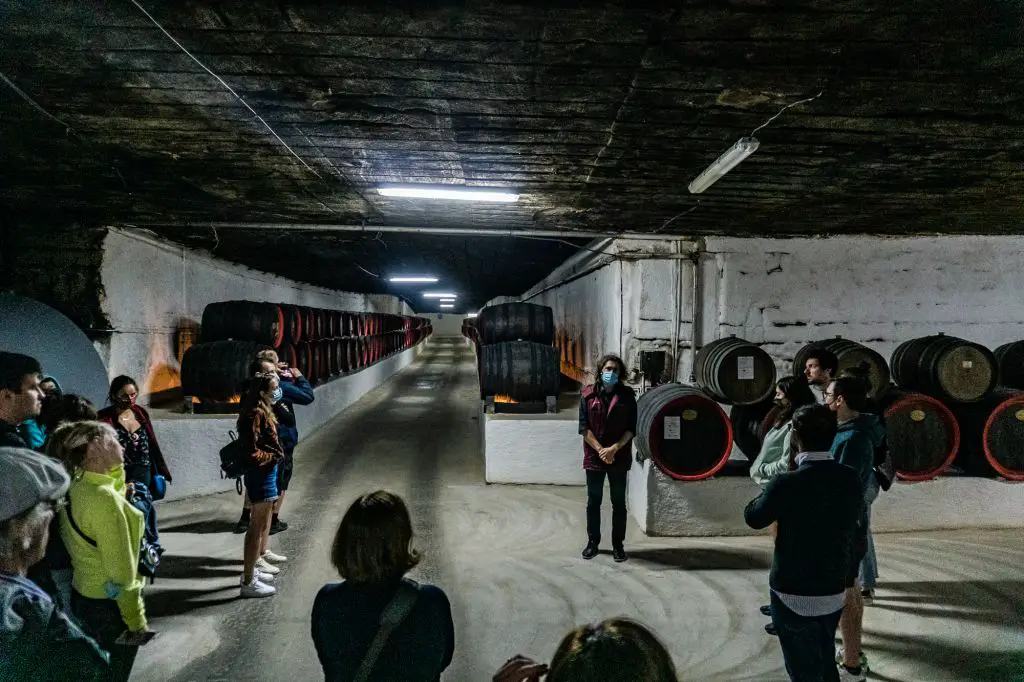
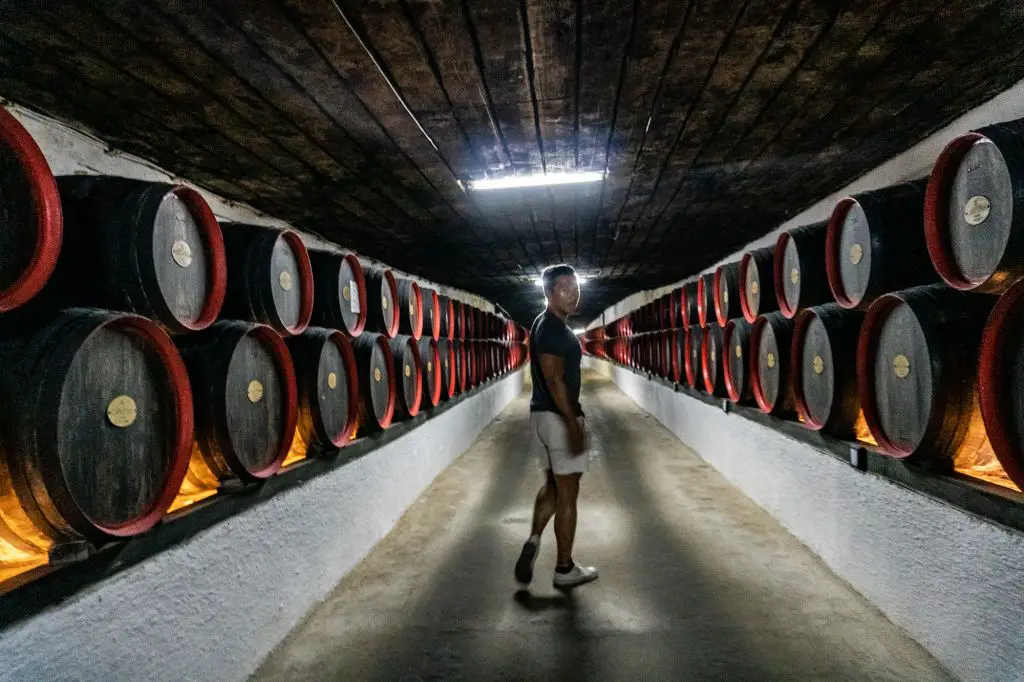

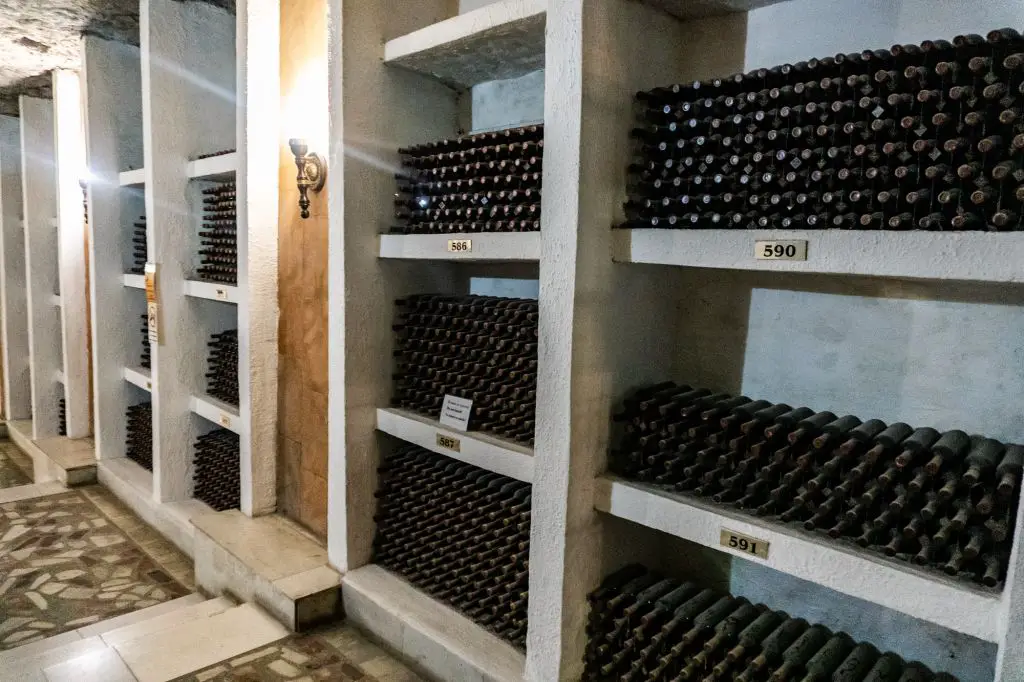

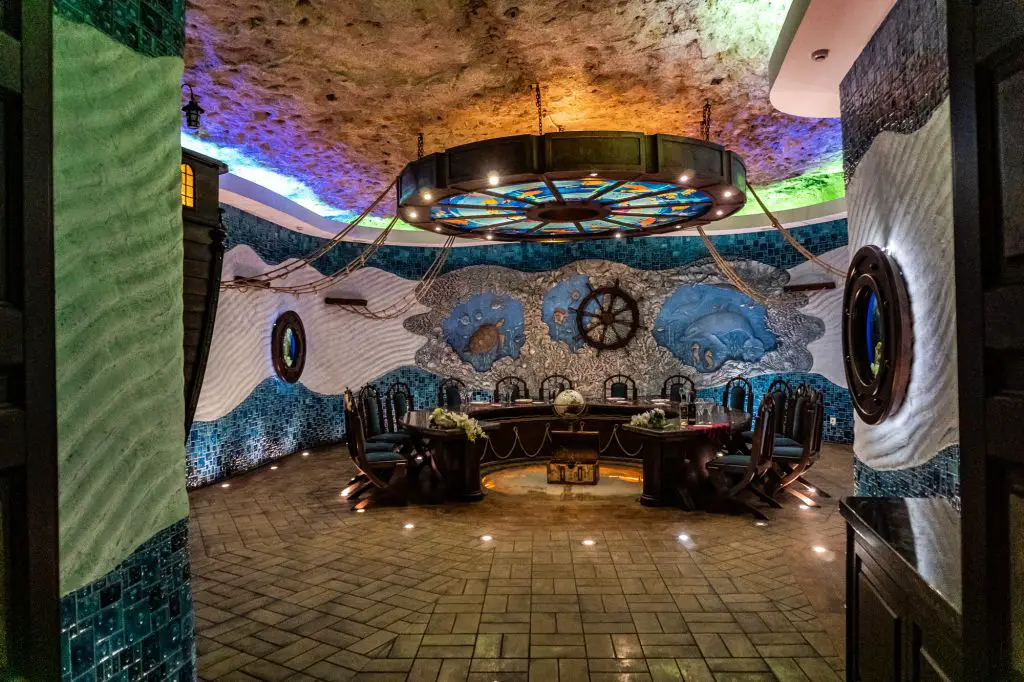
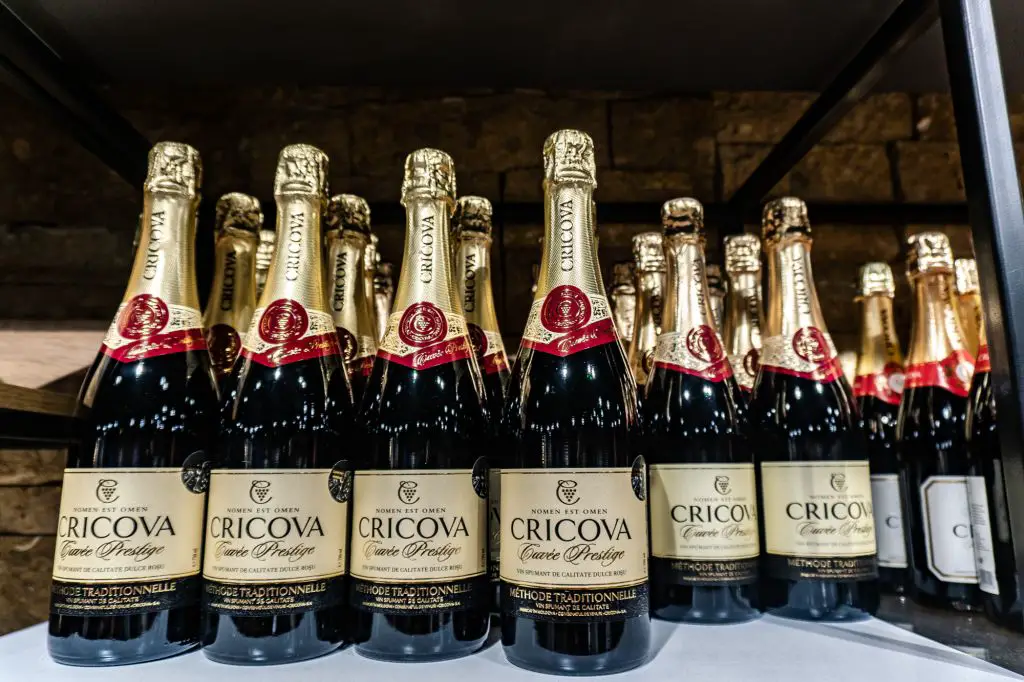
Note that the winery itself is not where the vineyards are. I was hoping for beautiful views of the Moldovan vineyards while sipping on bubbly but that is simply not the case here. The vineyards are far away from the estate itself which is a bummer. There isn’t much of a wine tasting facility either so don’t expect the amazing wine tasting style of South Africa for example.
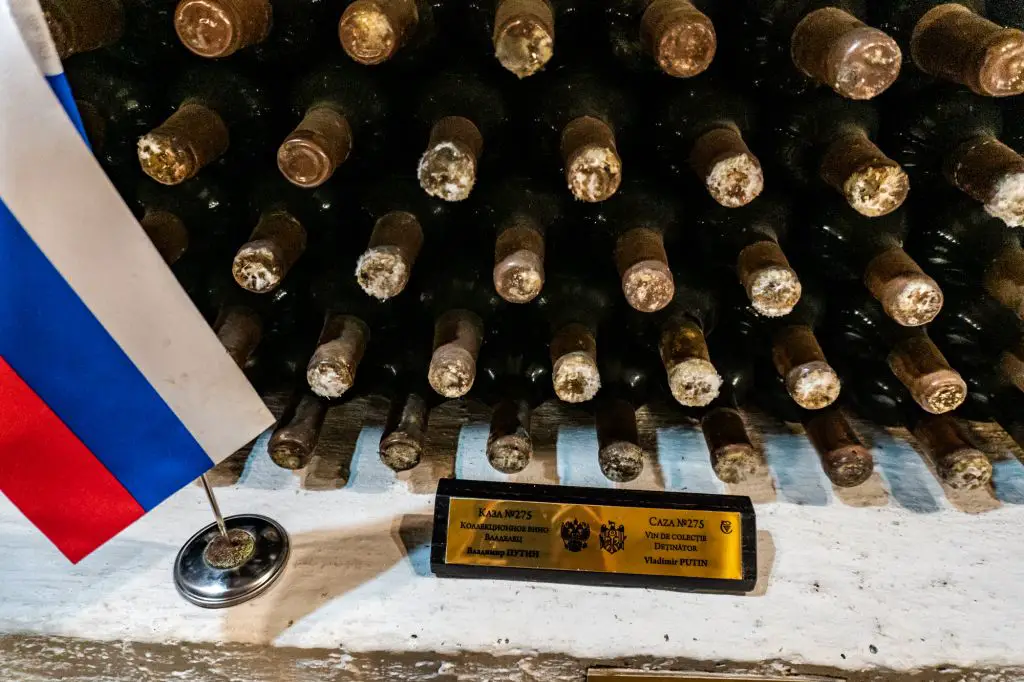
Other wineries to visit in Moldova are the Asconi Winery, Milestii Mici, and Chateau Purcari among many others.
Moldova Itinerary Day by Day
This is my Moldova itinerary on a day by day basis to summarize everything that I wrote. Again, I didn’t spend much time in the country so this is a short itinerary. I’m sure most people visiting Moldova will just be here to check off the country list but if you have the time to slow travel, then there’s no reason not to spend more time in the country!
Day 1: Arrive in Chisinau, walk around and explore the city
Day 2: Full day in Chisinau
Day 3: Full day trip to Transinitria
Day 4: Full day trip to visit the wineries and monasteries
Day 5: Depart from Chisinau





